Front Matter
Preface to the First Edition
Prefaces
Preface to the Paperback Version of the Second Edition
Table of Contents
1. Introduction
2. Basic Theorems in Dynamic Elasticity
2.1 Formulation
2.2 Stress-Strain Relations and the Strain-Energy Function
2.3 Theorems of Uniqueness and Reciprocity
2.3.1 Uniqueness Theorem
2.3.2 Reciprocity Theorems
2.4 Introducing Green's Function for Elastodynamics
2.5 Representation Theorems
2.6 Strain-Displacement Relations and Displacement-Stress Relations in General Orthogonal Curvilinear Coordinates
Problems
3. Representation of Seismic Sources
3.1 Representation Theorems for an Internal Surface; Body-Force Equivalents for Discontinuities in Traction and Displacement
3.1.1 Body-Force Equivalents
3.2 A Simple Example of Slip on a Buried Fault
3.3 General Analysis of Displacement Discontinuities across an Internal Surface Sigma
3.4 Volume Sources: Outline of the Theory and Some Simple Examples
Problems
4. Elastic Waves from a Point Dislocation Source
4.1 Formulation: Introduction of Potentials
4.1.1 Lamé's Theorem
4.2 Solution for the Elastodynamic Green Function in a Homogeneous, Isotropic, Unbounded Medium
4.2.1 Properties of the Far-Field P-Wave
4.2.2 Properties of the Far-Field S-Wave
4.2.3 Properties of the Near-Field Term
4.3 The Double-Couple Solution in an Infinite Homogeneous Medium
4.4 Ray Theory for Far-Field P-Waves and S-Waves from a Point Source
4.4.1 Properties of the Travel-Time Function T x Associated with Velocity Field cx
4.4.2 Ray Coordinates
4.4.3 The Geometrical Solution for P-Waves in Spherically Symmetric Media
4.4.4 The Geometrical Solution for S-Waves in Spherically Symmetric Media: Introduction of the Components
4.4.5 The Geometrical Ray Solutions in General Inhomogeneous Media
4.5 The Radiation Pattern of Body Waves in the Far Field for a Point Shear Dislocation of Arbitrary Orientation in a Spherically Symmetric Medium
4.5.1 A Method for Obtaining the Fault-Plane Orientation of an Earthquake and the Direction of Slip Using Teleseismic Body-Wave Observations
4.5.2 Arbitrary Orientation of the Double Couple in a Homogeneous Medium
4.5.3 Adapting the Radiation Pattern to the Case of a Spherically Symmetric Medium
Problems
5. Plane Waves in Homogeneous Media and Their Reflection and Transmission at a Plane Boundary
5.1 Basic Properties of Plane Waves in Elastic Media
5.1.1 Potentials for Plane Waves
5.1.2 Separation of Variables; Steady-State Plane Waves
5.2 Elementary Formulas for Reflection/Conversion/Transmission Coefficients
5.2.1 Boundary Conditions
5.2.2 Reflection of Plane P-Waves and SV-Waves at a Free Surface
5.2.3 Reflection and Transmission of SH-Waves
5.2.4 Reflection and Transmission of P-SV across a Solid-Solid Interface
5.2.5 Energy Flux
5.2.6 A Useful Approximation for Reflection/Transmission Coefficients between Two Similar Half-Spaces
5.2.7 Frequency Independence of Plane-Wave Reflection/Transmission Coefficients
5.3 Inhomogeneous Waves, Phase Shifts, and Interface Waves
5.4 A Matrix Method for Analyzing Plane Waves in Homogeneous Media
5.5 Wave Propagation in an Attenuating Medium: Basic Theory for Plane Waves
5.5.1 The Necessity for Material Dispersion in an Attenuating Medium
5.5.2 Some Suggested Values for Material Dispersion in an Attenuating Medium
5.6 Wave Propagation in an Elastic Anisotropic Medium: Basic Theory for Plane Waves
Problems
6. Reflection and Refraction of Spherical Waves; Lamb's Problem
6.1 Spherical Waves as a Superposition of Plane Waves and Conical Waves
6.2 Reflection of Spherical Waves at a Plane Boundary: Acoustic Waves
6.3 Spherical Waves in an Elastic Half-Space: The Rayleigh Pole
6.4 Cagniard-de Hoop Methods for Line Sources
6.5 Cagniard-de Hoop Methods for Point Sources
6.6 Summary of Main Results and Comparison between Different Methods
Problems
7. Surface Waves in a Vertically Heterogeneous Medium
7.1 Basic Properties of Surface Waves
7.2 Eigenvalue Problem for the Displacement-Stress Vector
7.2.1 Numerical Integration
7.2.2 Propagator Matrix Method
7.3 Variational Principle for Love and Rayleigh Waves
7.3.1 Love Waves
7.3.2 Rayleigh Waves
7.3.3 Rayleigh-Ritz Method
7.3.4 Attenuation of Surface Waves
7.4 Surface-Wave Terms of Green's Function for a Vertically Heterogeneous Medium
7.4.1 Two-Dimensional Case
7.4.2 Three-Dimensional Case
7.5 Love and Rayleigh Waves from a Point Source with Arbitrary Seismic Moment
7.6 Leaky Modes
7.6.1 Organ-Pipe Mode
7.6.2 Phase Velocity and Attenuation
Problems
8. Free Oscillations of the Earth
8.1 Free Oscillations of a Homogeneous Liquid Sphere
8.2 Excitation of Free Oscillations by a Point Source
8.3 Surface Waves on the Spherical Earth
8.4 Free Oscillations of a Self-Gravitating Earth
8.5 The Centroid Moment Tensor
8.6 Splitting of Normal Modes due to the Earth's Rotation
8.7 Spectral Splitting of Free Oscillations due to Lateral Inhomogeneity of the Earth's Structure
Problems
9. Body Waves in Media with Depth-Dependent Properties
9.1 Cagniard's Method for a Medium with Many Plane Layers: Analysis of a Generalized Ray
9.2 The Reflectivity Method for a Medium with Many Plane Layers
9.3 Classical Ray Theory in Seismology
9.4 Inversion of Travel-Time Data to Infer Earth Structure
9.4.1 The Herglotz-Wiechert Formula
9.4.2 Travel-Time Inversion for Structures Including Low-Velocity Layers
9.5 Wave Propagation in Media Having Smoothly Varying Depth-Dependent Velocity Profiles within which Turning Points are Present
9.6 Body-Wave Problems for Spherically Symmetric Earth Models in which Discontinuities are Present between Inhomogeneous Layers
9.7 Comparison between Different Methods
Problems
10. The Seismic Source: Kinematics
10.1 Kinematics of an Earthquake as Seen at Far Field
10.1.1 Far-Field Displacement Waveforms Observed in a Homogeneous, Isotropic, Unbounded Medium
10.1.2 Far-Field Displacement Waveforms for Inhomogeneous Isotropic Media, Using the Geometrical-Spreading Approximation
10.1.3 General Properties of Displacement Waveforms in the Far Field
10.1.4 Behavior of the Seismic Spectrum at Low Frequencies
10.1.5 A Fault Model with Unidirectional Propagation
10.1.6 Nucleation, Spreading, and Stopping of Rupture
10.1.7 Corner Frequency and the High-Frequency Asymptote
10.2 Kinematics of an Earthquake as Seen at near Field
10.2.1 Synthesis of Near-Field Seismograms for a Finite Dislocation
10.2.2 High-Frequency Motions near a Propagating Fault
10.2.3 Anti-Plane Problems
10.2.4 In-Plane Problems
Problems
11. The Seismic Source: Dynamics
11.1 Dynamics of a Crack Propagating with Prescribed Velocity
11.1.1 Relations between Stress and Slip for a Propagating Crack
11.1.2 Energetics at the Crack Tip
11.1.3 Cohesive Force
11.1.4 Near Field of a Growing Elliptical Crack
11.1.5 The Far-Field Spectrum for a Circular Crack That Stops
11.2 Dynamics of Spontaneous Planar Rupture Propagation
11.2.1 Spontaneous Propagation of an Anti-Plane Crack: General Theory
11.2.2 Examples of Spontaneous Anti-Plane Crack Propagation
11.2.2.1 A Semi-Infinite Crack
11.2.2.2 A Semi-Infinite Crack That Stops
11.2.2.3 Slip-Rate-Dependent Boundary Condition on the Fault
11.2.2.4 Cohesionless Crack
11.2.3 Spontaneous Propagation of an In-Plane Shear Crack
11.3 Rupture Propagation Associated with Changes in Normal Stress
Problems
12. Principles of Seismometry
12.1 Basic Instrumentation
12.1.1 Basic Inertial Seismometer
12.1.2 Stable Long-Period Vertical Suspension
12.1.3 Measurement of Horizontal Acceleration
12.1.4 Measurement of Strain and Rotation
12.2 Frequency and Dynamic Range of Seismic Signals and Noise
12.2.1 Surface Waves with Periods around 20 Seconds
12.2.2 P-Waves for 5° < Delta < 110°
12.2.3 Range of Amplitude Spectral Densities for Surface Waves and P-Waves
12.2.4 Microearthquake Waves at Short Distance
12.2.5 Ambient Seismic Noise
12.2.6 Amplitude of Free Oscillations
12.2.7 Amplitudes of Solid Earth Tide, Chandler Wobble, Plate Motion, and Moonquakes
12.2.8 Seismic Motion in the Epicentral Area
12.2.9 Strain Amplitudes of Gravitational Waves
12.3 Detection of Signal
12.3.1 Brownian Motion of a Seismometer Pendulum
12.3.2 Electromagnetic Velocity Sensor
12.3.3 The Response Characteristics of Traditional Observatory Seismographs
12.3.4 High Sensitivity at Long Periods
12.3.5 The Nonlinearity of the Seismic Sensor
12.3.6 Feedback Seismometers
Problems
Key Formulas
Appendices
Appendix 1: Glossary of Waves
Appendix 2: Definition of Magnitudes
Bibliography
Index
A
B
C
D
E
F
G
H
I
J
K
L
M
N
O
P
Q
R
S
T
U
V
W
Y
Z
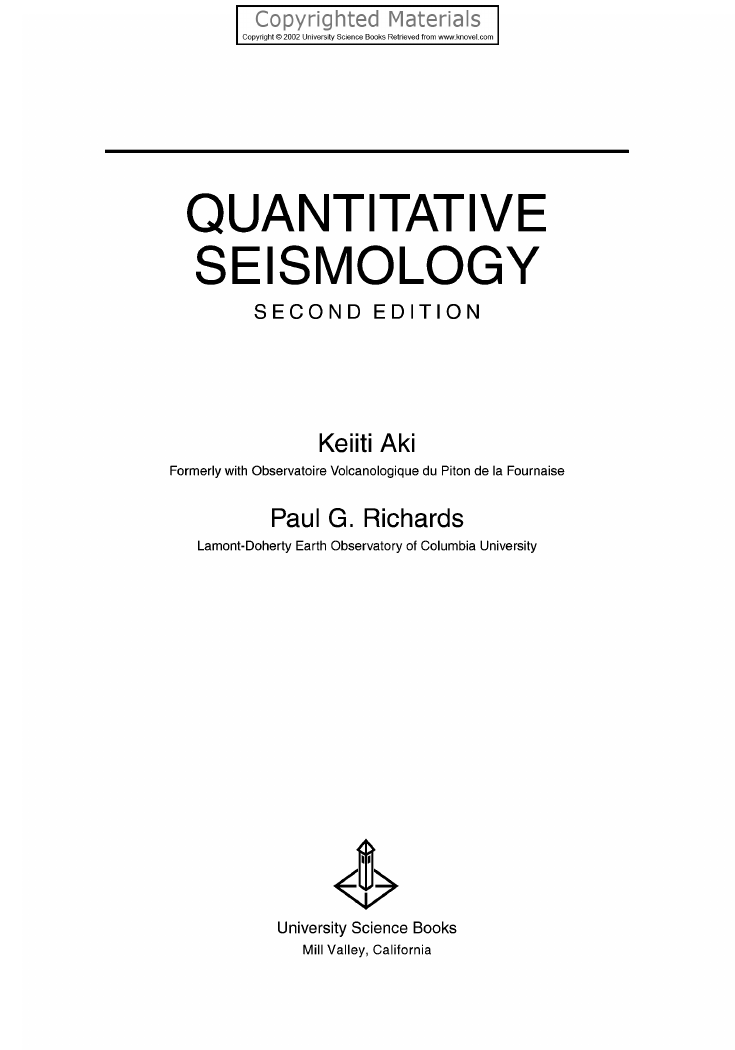
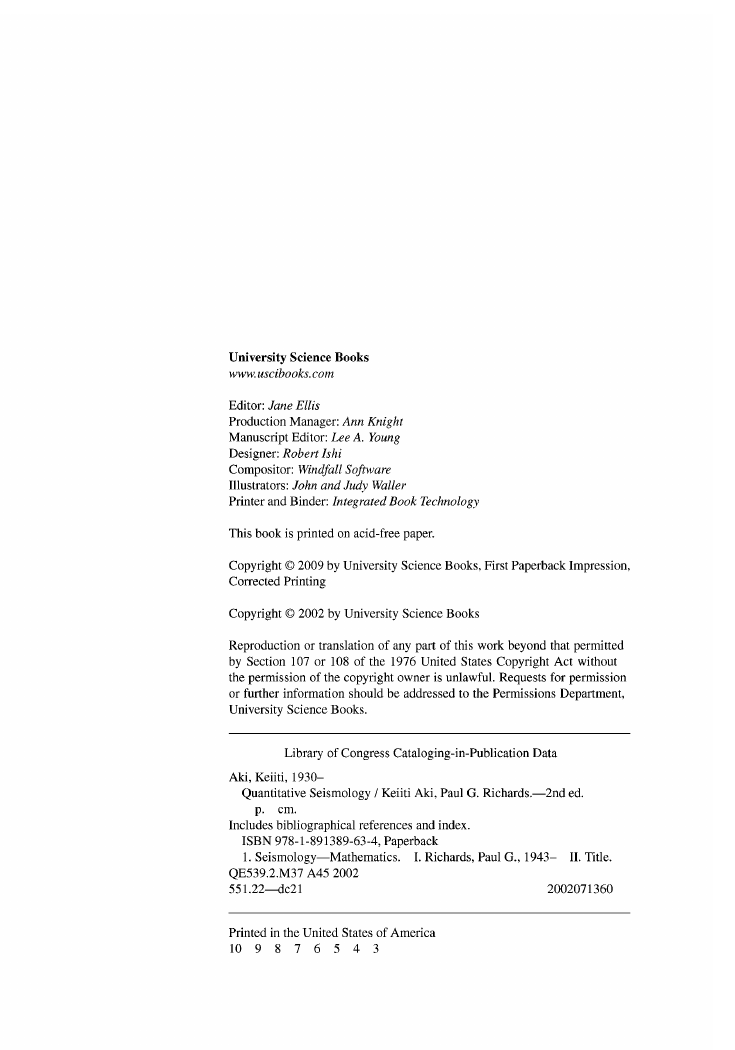
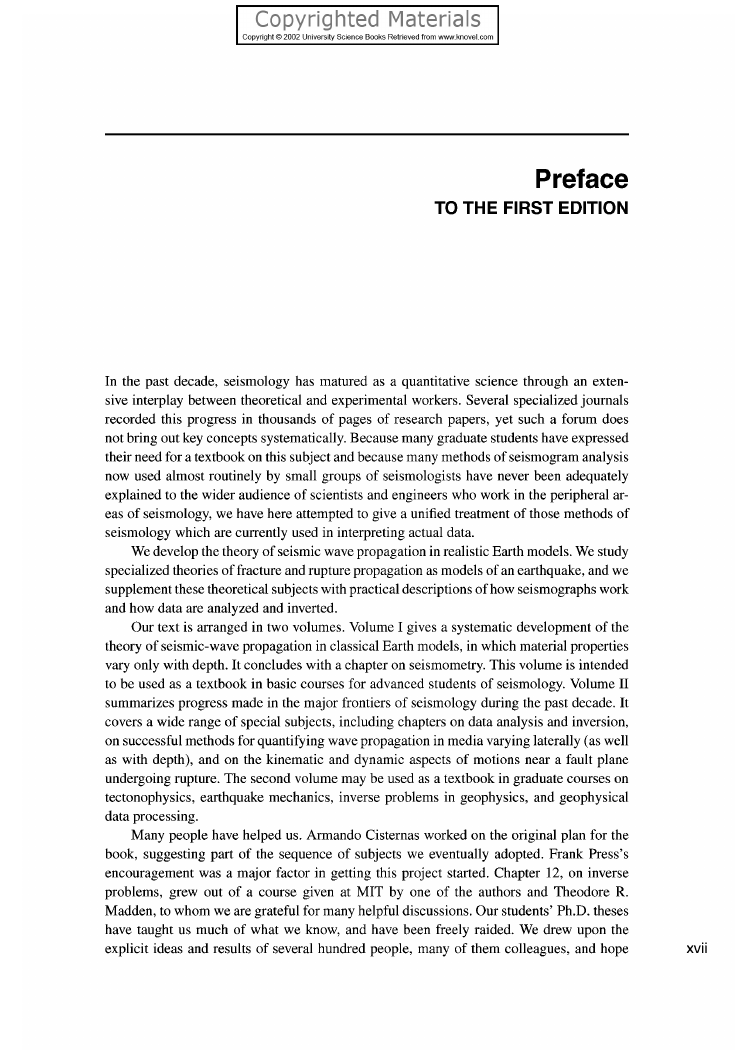
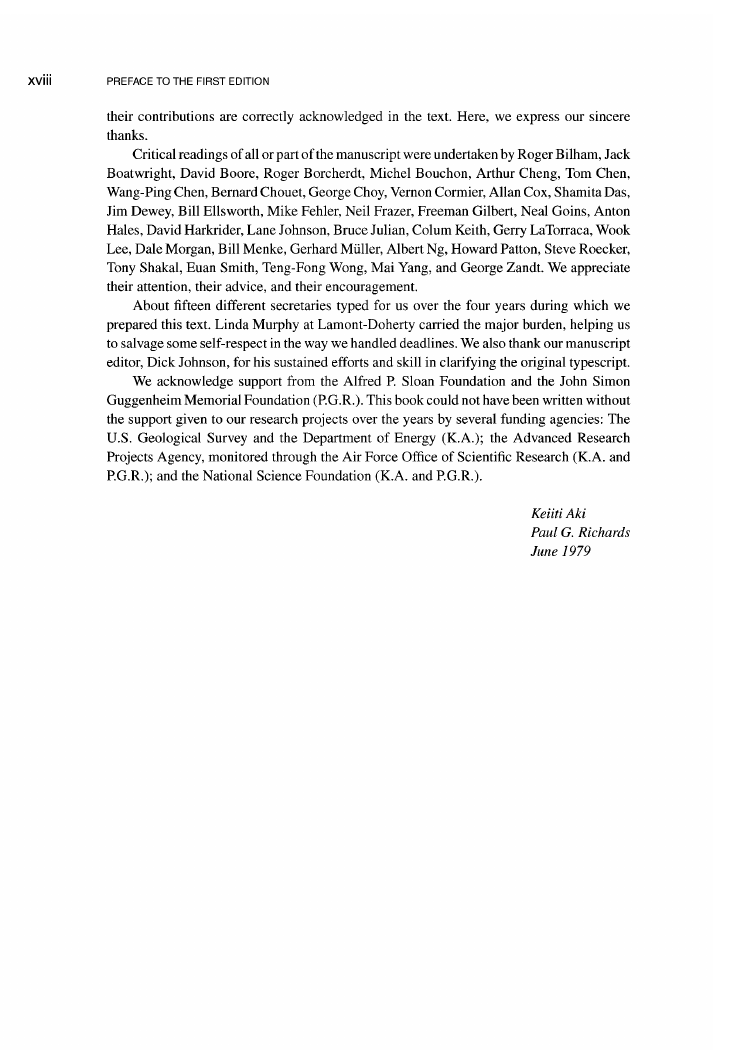

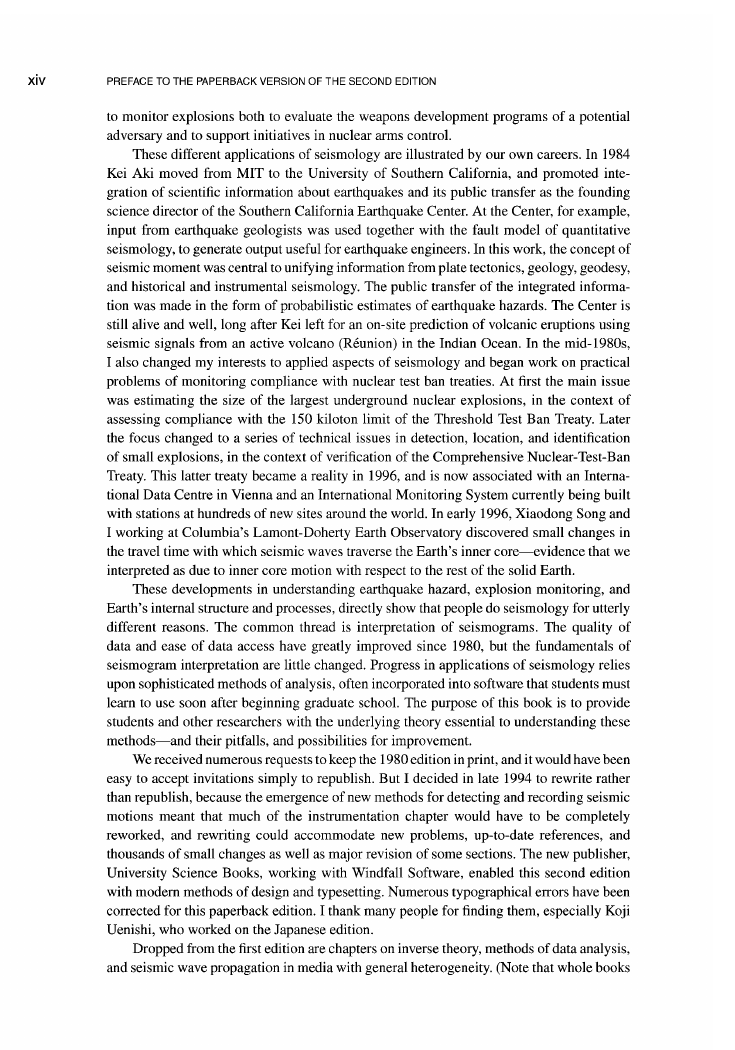
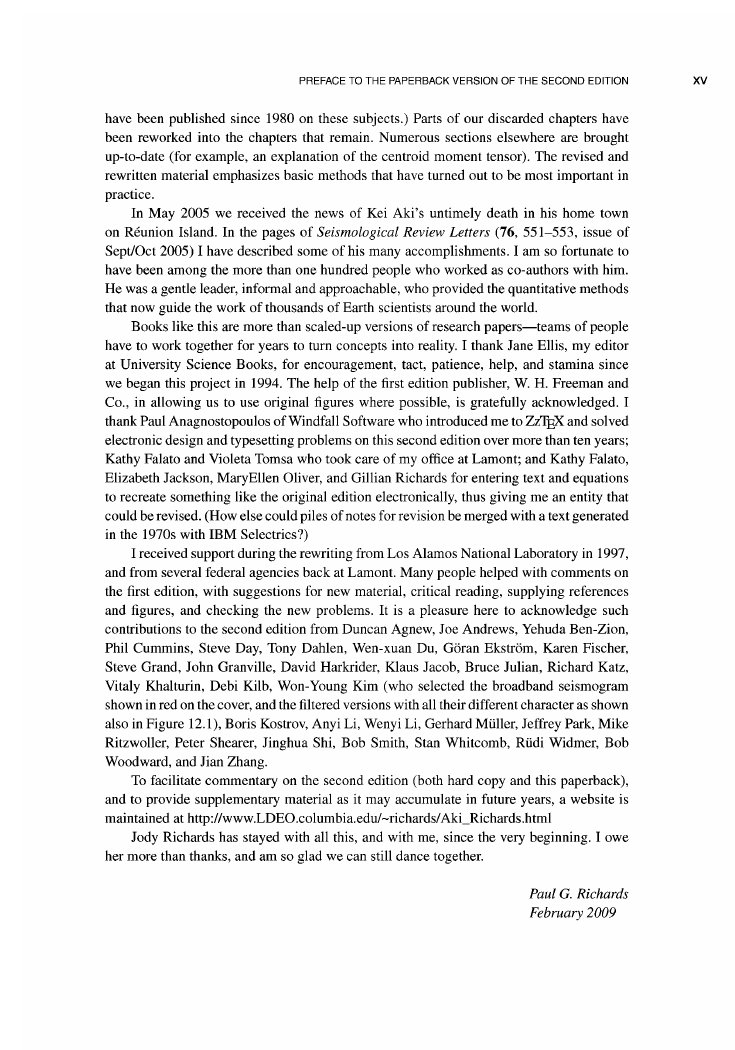
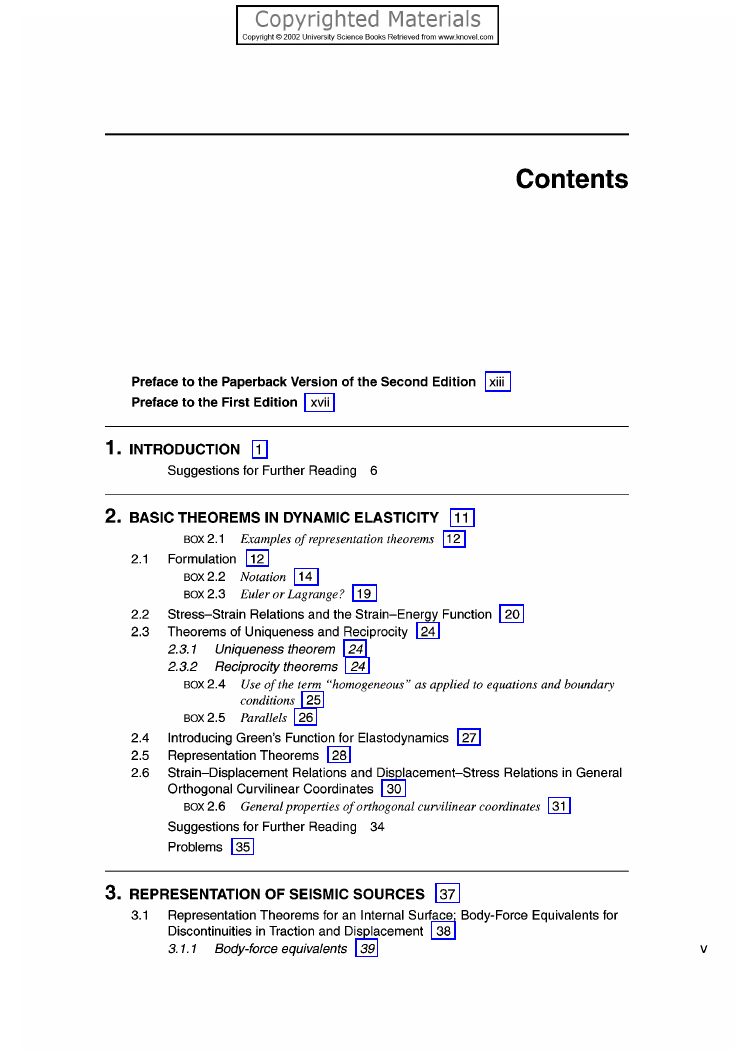








 2023年江西萍乡中考道德与法治真题及答案.doc
2023年江西萍乡中考道德与法治真题及答案.doc 2012年重庆南川中考生物真题及答案.doc
2012年重庆南川中考生物真题及答案.doc 2013年江西师范大学地理学综合及文艺理论基础考研真题.doc
2013年江西师范大学地理学综合及文艺理论基础考研真题.doc 2020年四川甘孜小升初语文真题及答案I卷.doc
2020年四川甘孜小升初语文真题及答案I卷.doc 2020年注册岩土工程师专业基础考试真题及答案.doc
2020年注册岩土工程师专业基础考试真题及答案.doc 2023-2024学年福建省厦门市九年级上学期数学月考试题及答案.doc
2023-2024学年福建省厦门市九年级上学期数学月考试题及答案.doc 2021-2022学年辽宁省沈阳市大东区九年级上学期语文期末试题及答案.doc
2021-2022学年辽宁省沈阳市大东区九年级上学期语文期末试题及答案.doc 2022-2023学年北京东城区初三第一学期物理期末试卷及答案.doc
2022-2023学年北京东城区初三第一学期物理期末试卷及答案.doc 2018上半年江西教师资格初中地理学科知识与教学能力真题及答案.doc
2018上半年江西教师资格初中地理学科知识与教学能力真题及答案.doc 2012年河北国家公务员申论考试真题及答案-省级.doc
2012年河北国家公务员申论考试真题及答案-省级.doc 2020-2021学年江苏省扬州市江都区邵樊片九年级上学期数学第一次质量检测试题及答案.doc
2020-2021学年江苏省扬州市江都区邵樊片九年级上学期数学第一次质量检测试题及答案.doc 2022下半年黑龙江教师资格证中学综合素质真题及答案.doc
2022下半年黑龙江教师资格证中学综合素质真题及答案.doc